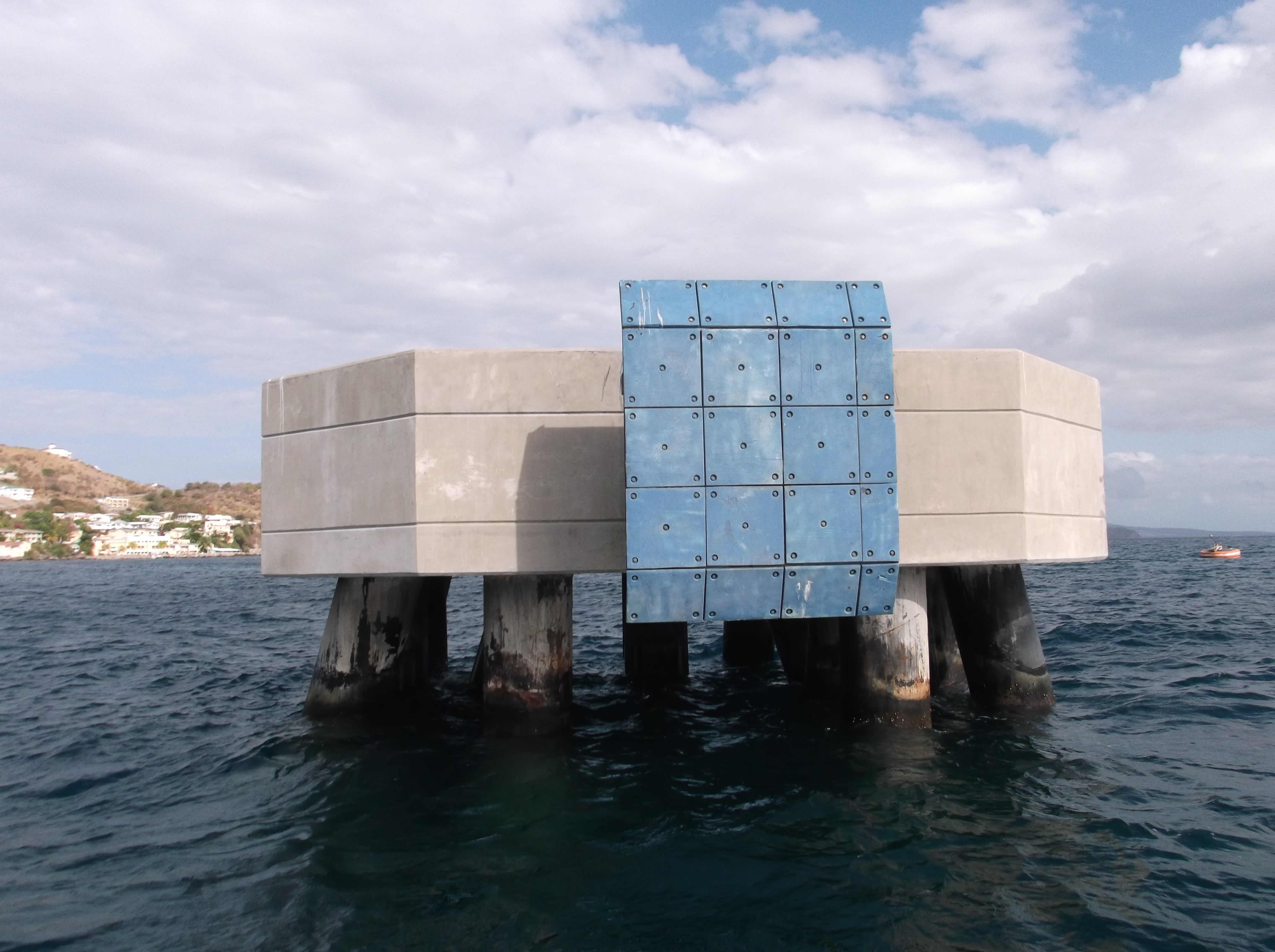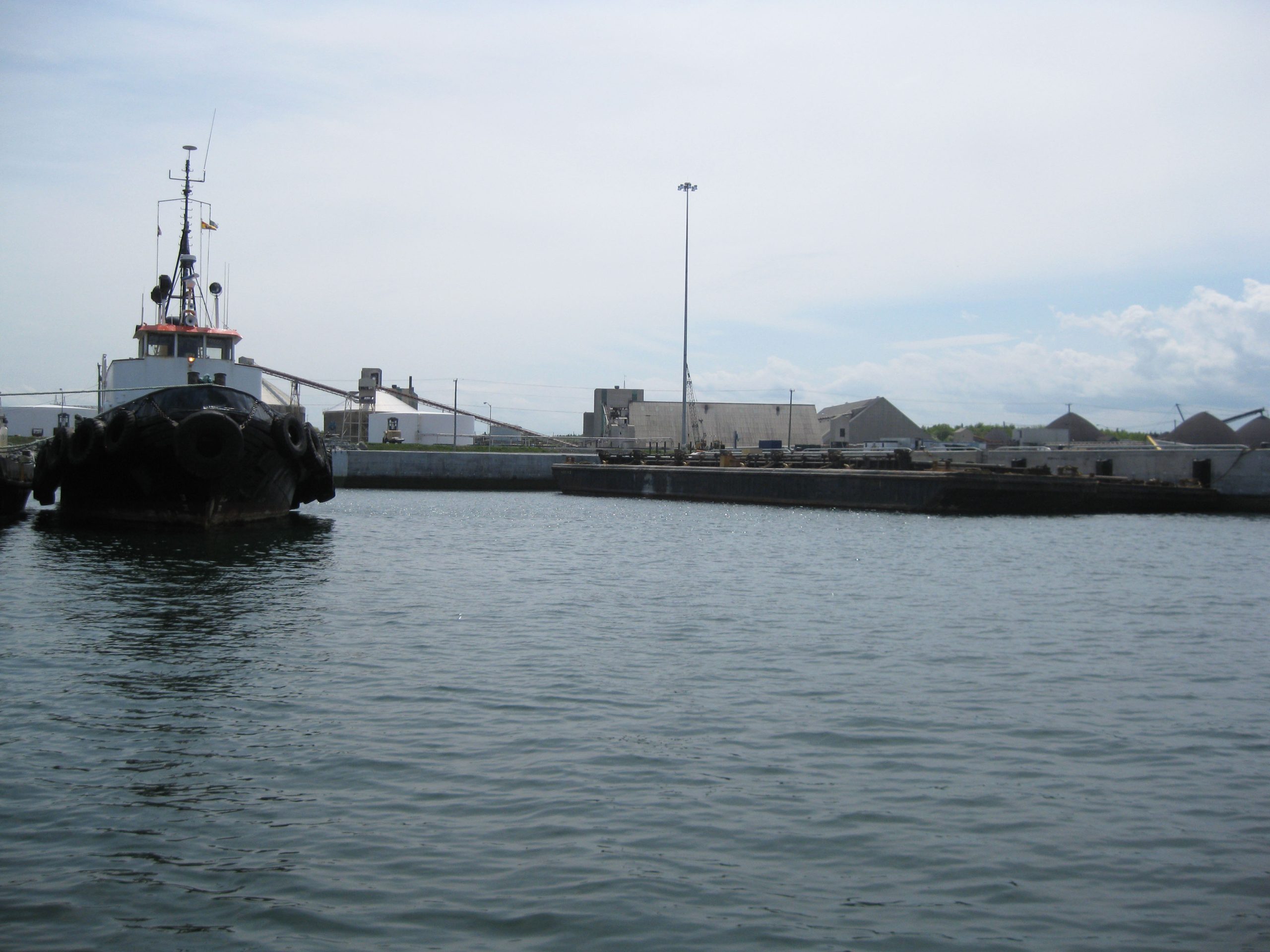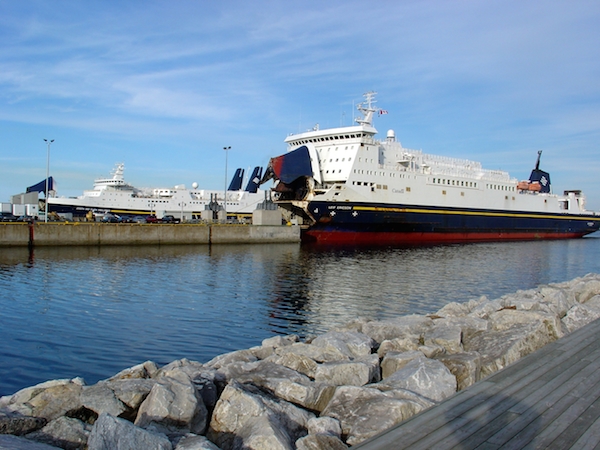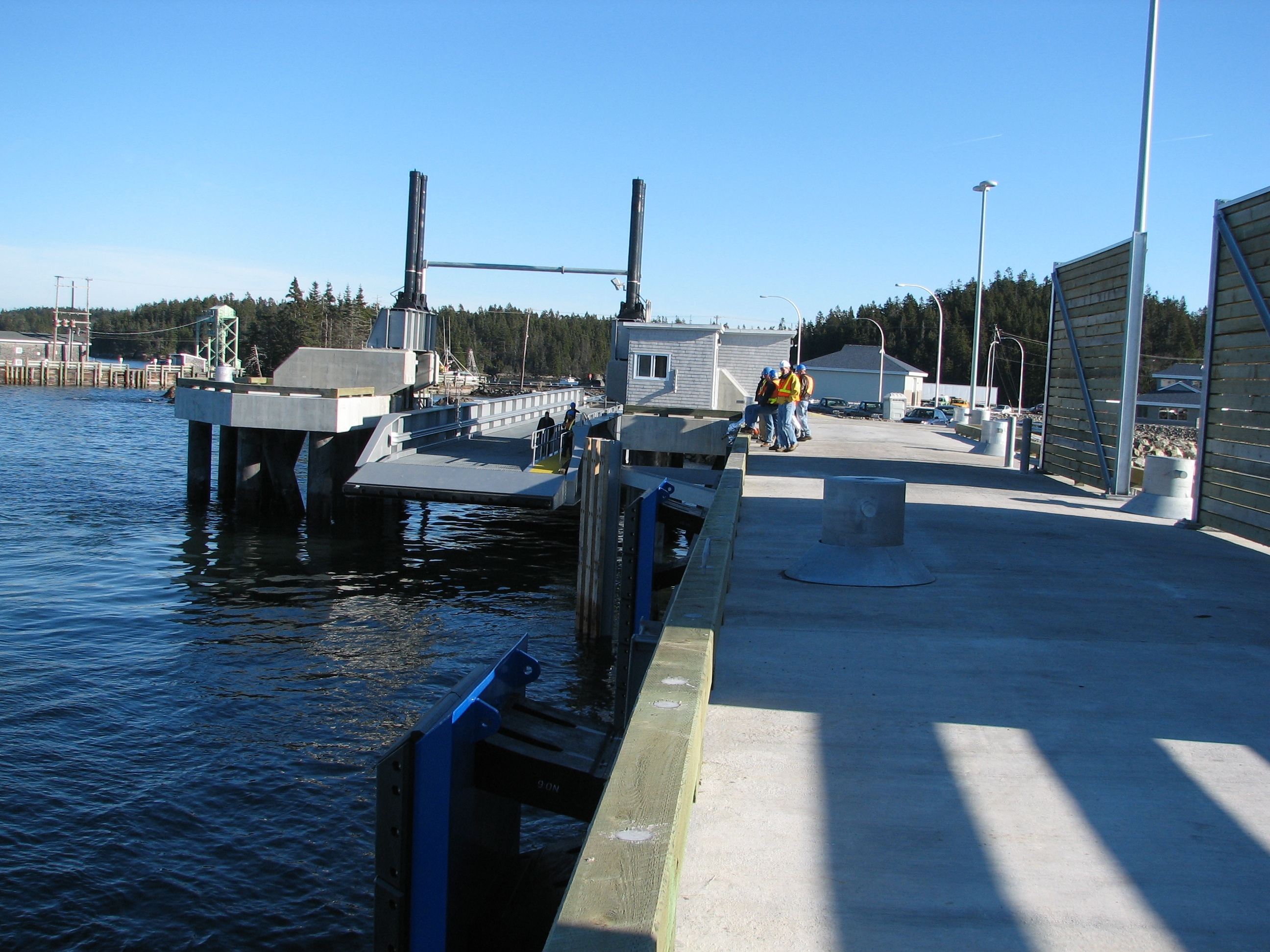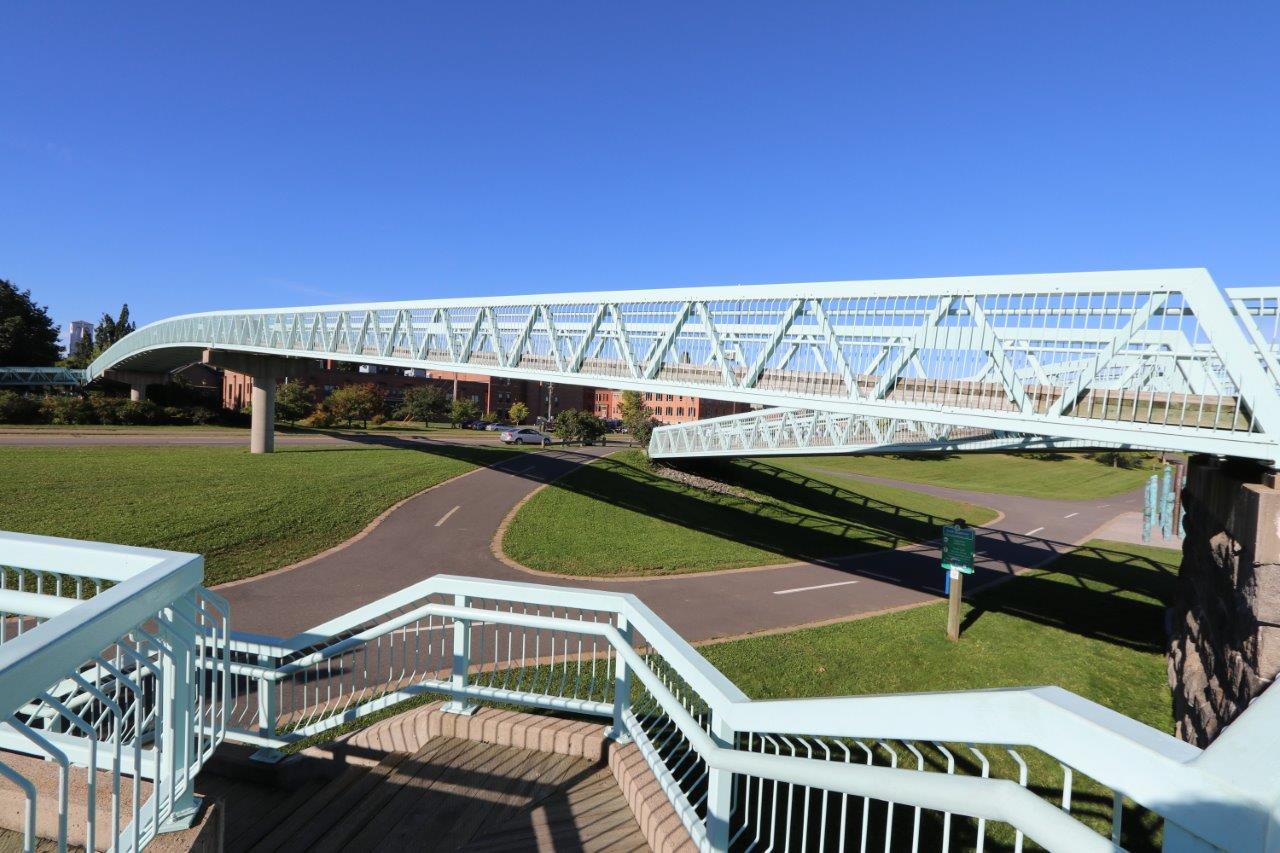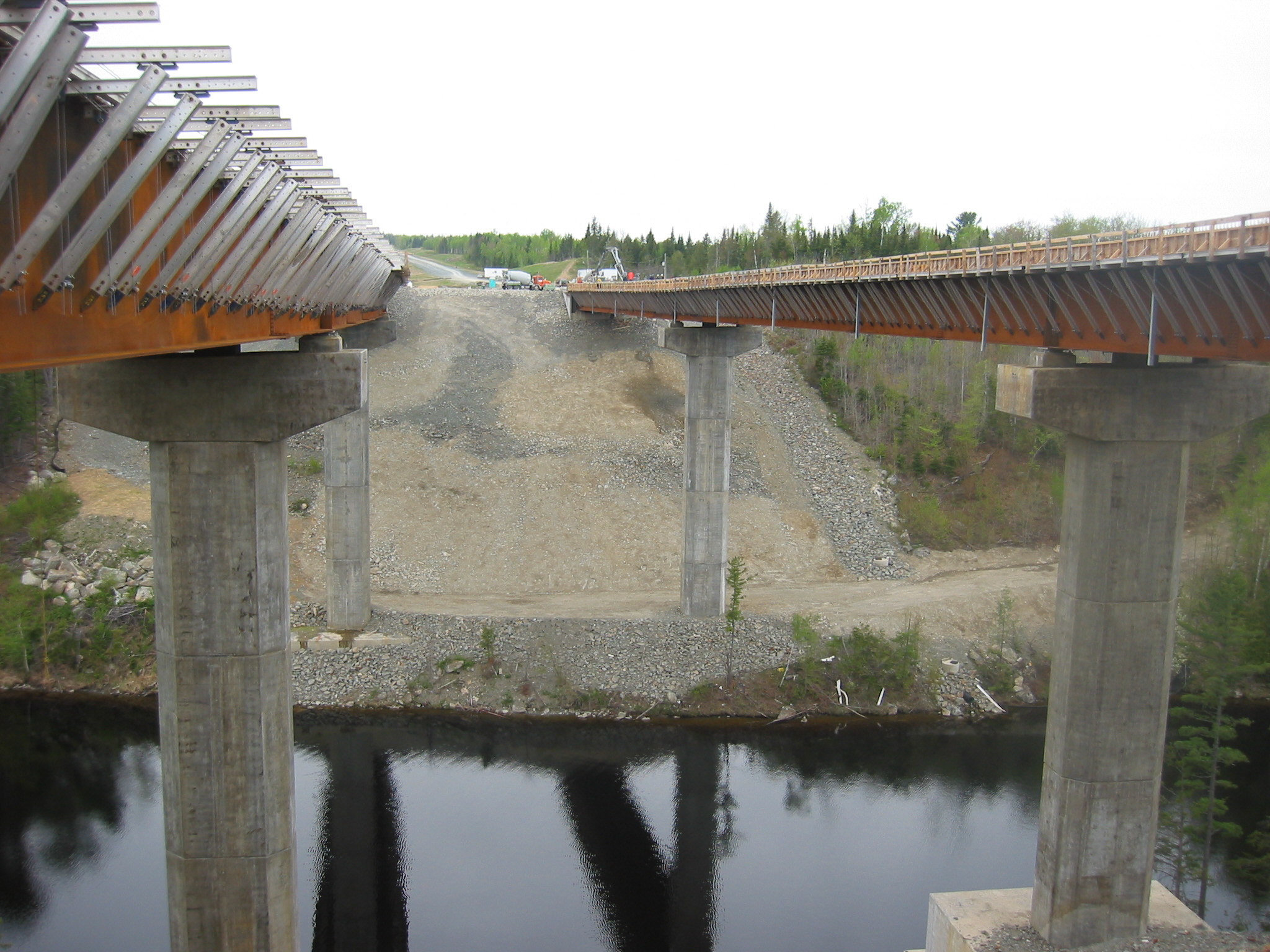This $10.5±M, 6 span continuous, 2 lane, 355 m long steel girder bridge was part of the Longs Creek – Grand Falls Trans Canada Highway project constructed by Brunway Group in 2005 – 07. The structure was constructed with 62.5 m – 68 m interior spans with 47 m and 50 m end spans.
The Meduxnekeag River at the crossing site is a medium size, fast flowing stream bounded on the south by a considerable expanse of flat low lying grassy river bank. Beyond the river’s flood plain area, wooded river banks slope steeply to a height of 30 m above the level of the valley below.
The bridge was constructed to replace an existing bridge that had been constructed in 1960. The spans and pier locations of the new bridge were selected to minimize interaction with the existing bridge’s deep substructure units.
The bridge girders were constructed using unpainted, weathering steel protected from spray and bridge deck run off by a waterproof membrane and concrete deck slab cantilevering well beyond the bridge’s steel spandrel girders.
The use of expansion joints was minimized with only two finger plate expansion joints located at the bridge abutments. Pot bearing assemblies were used to support the bridge superstructure.
Pier footings were placed below the existing gravel stream bed and supported either on bedrock or on driven steel H piling. As such, minimal amounts of moderately sized pier scour protection were required.
